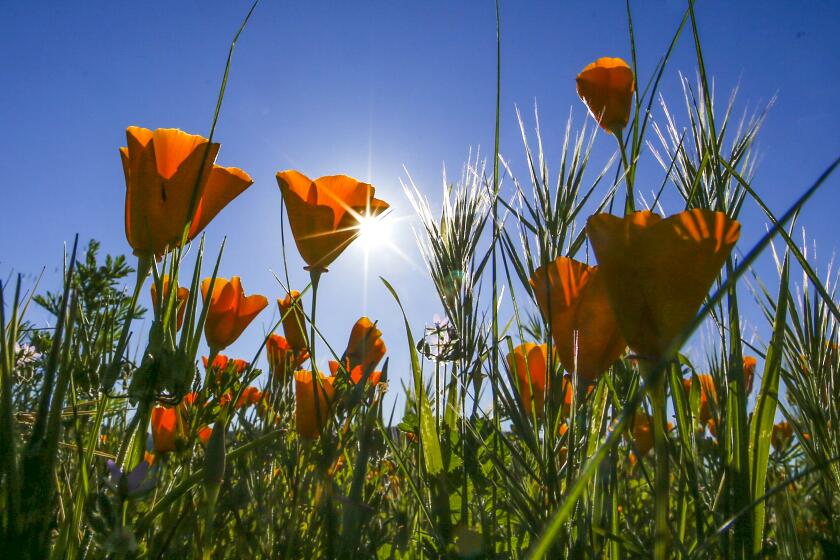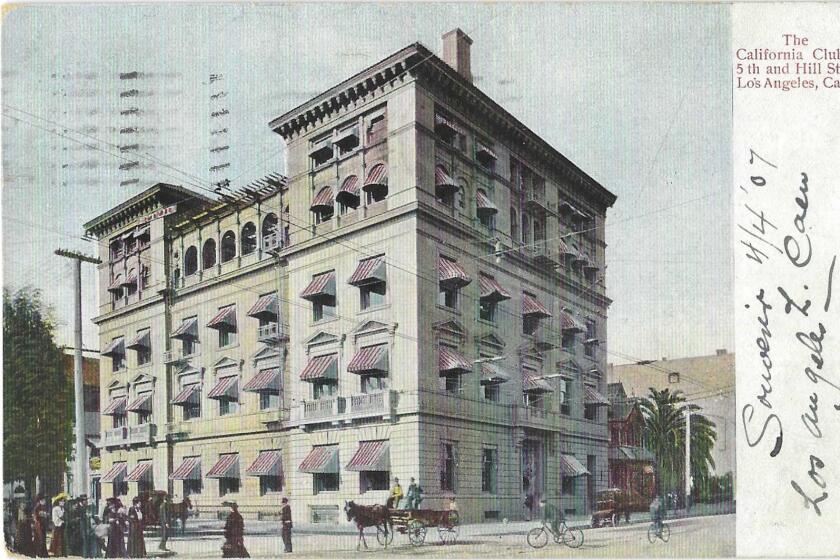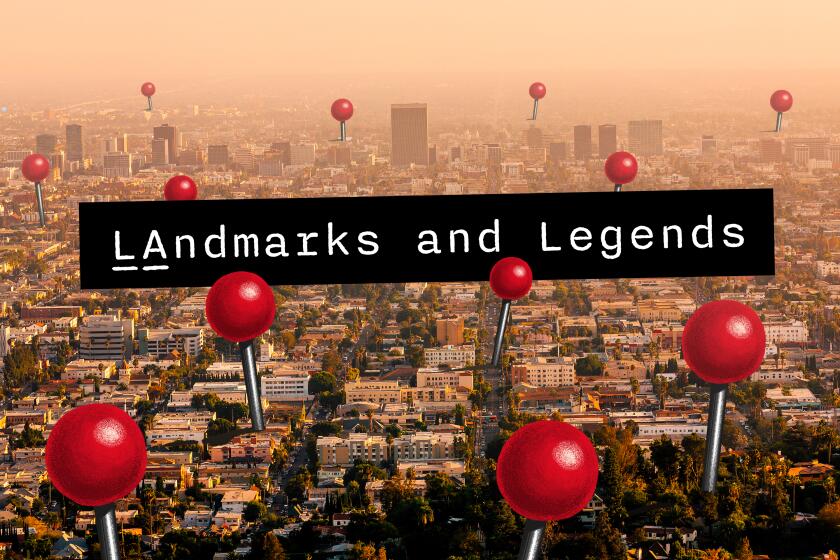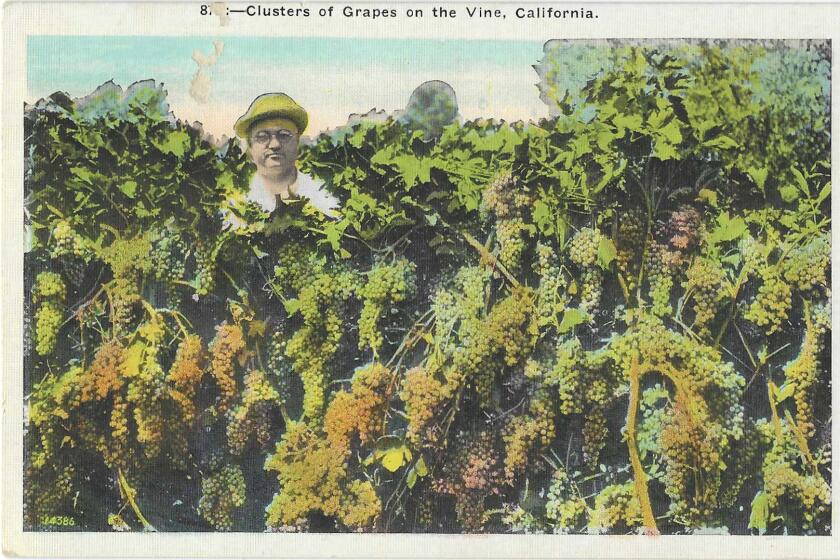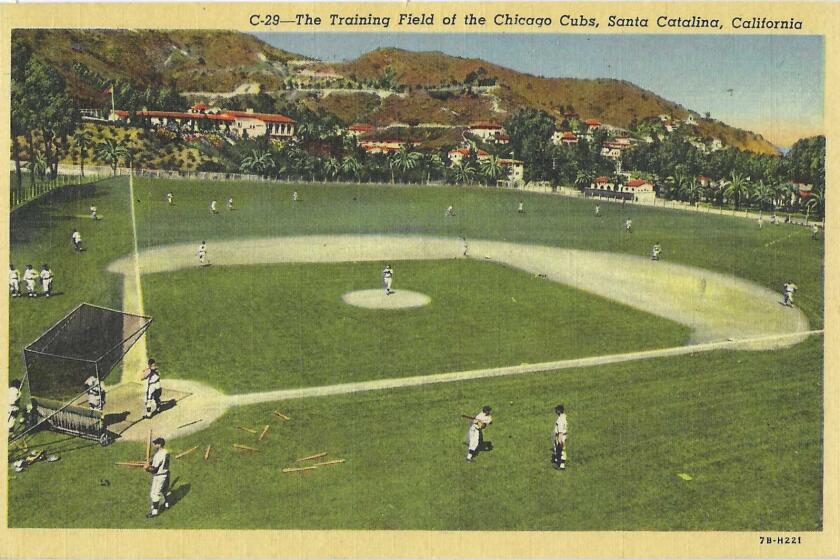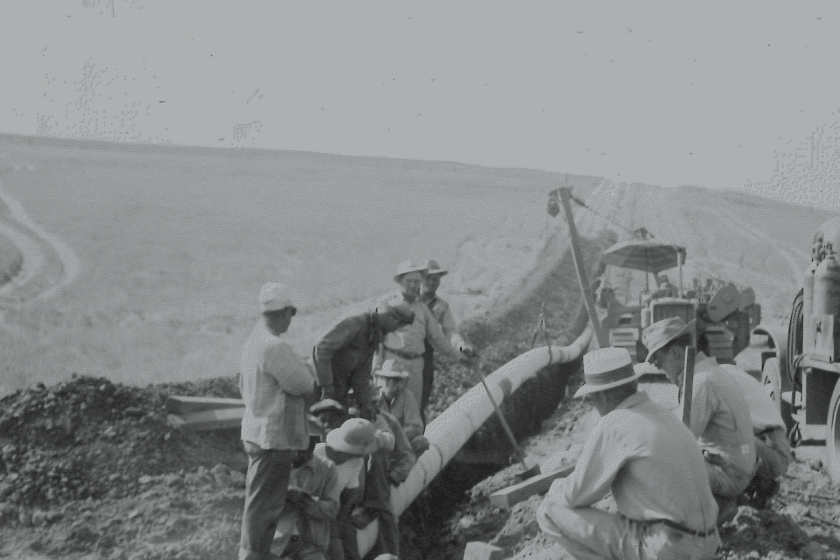‘Paradise with a lobotomy’ or ‘just a big parking lot’? Pick your fave L.A. insult
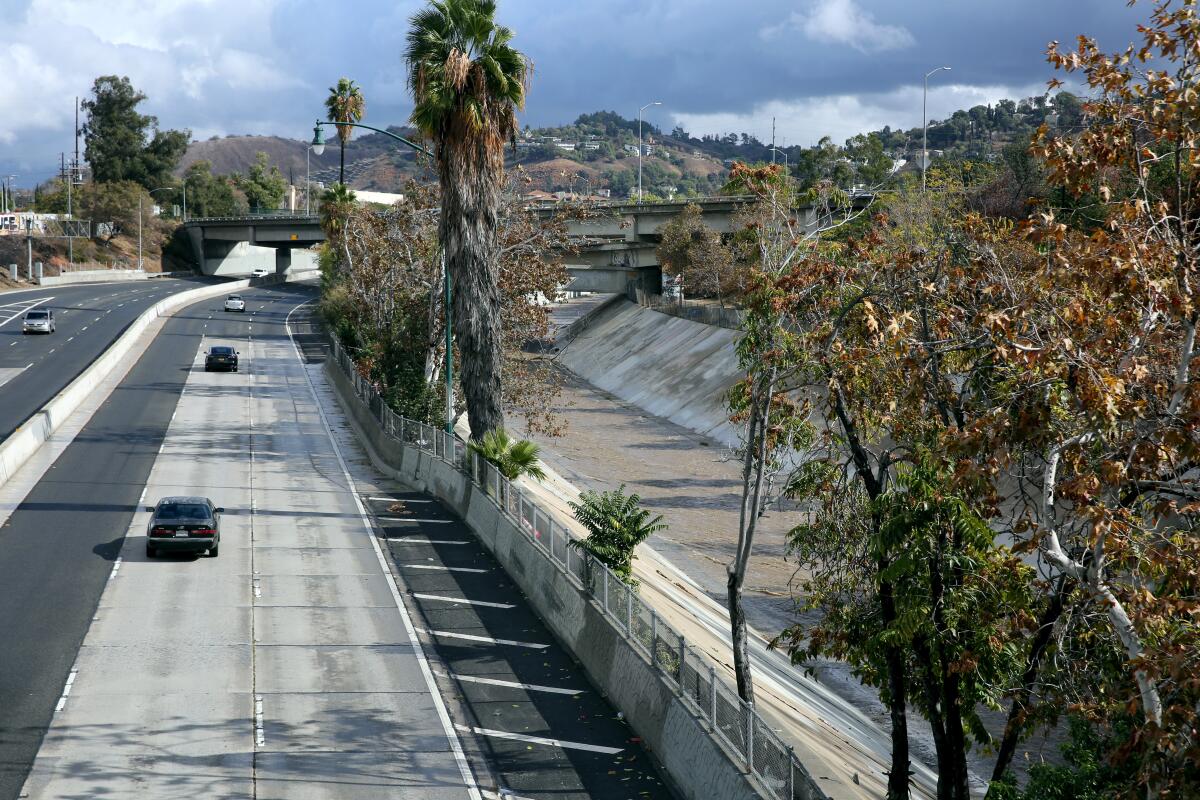
Oh, how they love to hate us.
Los Angeles, the punching bag. Los Angeles, the tease. Los Angeles, where the aggravated and disillusioned find even the sunlight to be sinister.
Anyone who has ever concluded that L.A. is disappointing, frustrating, perplexing, unhinged or incomprehensible can find plenty of quotes that speak for them, remarks by celebrated people about how awful Los Angeles is.
The resentment and mockery have risen in tandem with the dozen decades of Los Angeles’ ascent to international standing — and especially toward Hollywood, a smallish neighborhood that is a huge, irresistible target.
But L.A. is bigger than Hollywood — elusive, always in flux, defying and defeating cliché. Walt Whitman would have loved it here, recognizing that L.A., like his 19th century America, contains multitudes, and is perfectly fine with contradicting itself.
Your favorite anti-L.A. barb may not be here, for there are hundreds of these slings and slaggings. Maybe you will find a new favorite. (If not, add your own in the comments — or make up a new L.A. insult or compliment.)
Get the latest from Patt Morrison
Los Angeles is a complex place. Luckily, there's someone who can provide context, history and culture.
You may occasionally receive promotional content from the Los Angeles Times.
First, let’s acknowledge that there are plenty of sober, considered, thoughtful, analytical critiques of the phenomena of L.A. and California. Many fine books are full of that, and too many lousy books try to match it.
But the bumper-sticker zinger is catnip for professional turners of phrase, and especially those whose fortunes and reputations are invested in New York’s or London’s yardstick of what a real city is supposed to be, or a real intellectual, or real culture.
To do to other cities what is done to L.A. — reduce it to Hollywood and beaches — we’d end up with:
- New York — moneymaking, museums, original Donald Trump enablers.
- Chicago — hog-butcher to the world, city of big shoulders and even bigger political scoundrels.
- Boston — Ivy League snobs and Irish mobs.
- San Francisco — beautiful setting, now with silicon chips instead of jewels.
Maybe I’m not staying up late enough, but I don’t hear about late-night comics dissing New York as they do L.A. (“I do love America. And L.A. is a very short commute to America. It’s like half an hour on the plane.” — Craig Ferguson). Possibly that’s because New Yorkers already do such a bang-up job of whinging about their own city that they don’t need an assist from professional comedians.
So here is a categorized sampling.
In spring, Los Angeles’ fancy turns to flowers native and non, and we relish the reprieve from heat waves and wildfires.
Los Angeles as a physical place
The Baltimore columnist and all-around misanthrope H.L. Mencken: L.A. is “19 suburbs in search of a city.” The New York writer and icepick-wit Dorothy Parker later expanded that to 72 suburbs. More on her later.
Also Mencken: “The whole place stank of orange blossoms.” Citrus made L.A. fragrant before smog crowded it out, but maybe orange blossoms — flower of bridal bouquets — scared off Mencken. He came to California in 1926 and squired around silent movie actress Aileen Pringle. She was anxious to marry him, but he fled the jurisdiction.
L.A.’s off-again-on-again downtown puzzled the out-of-towners. The CBS News sage Eric Sevareid, in the 1960s: “Downtown Los Angeles is already dead.” As we now know, to recast Mark Twain, reports of downtown’s death were exaggerated.
L.A.’s conflicted crosstown identity crisis, though — that lives on. Also in the 1960s, Times columnist Jack Smith kinda kidded that a Westside woman told him the only reason to come downtown was to get divorced. In 1994, in The Times, a “Westside arts leader confides that spending $214 million on the Downtown Library [restored after a 1986 arson fire] was ‘a complete waste’ because Westsiders don’t use it.” (The renowned author Ray Bradbury, who did not drive, nonetheless managed to get downtown to the Central Library all the time; the library’s square now bears his name.)
The size and scale of Los Angeles created unease in people accustomed to being mashed into Manhattan, which is why you found so many of them huddled on the Westside, and likely to agree with New York writer Fran Leibowitz, that “Los Angeles is a large city-like area surrounding the Beverly Hills Hotel.”
The freeways are the concrete net that overlies it all, but only real Angelenos enter their mesmerizing alpha state. “The freeway experience ... is the only secular communion Los Angeles has.… Actual participation requires total surrender, a concentration so intense as to seem a kind of narcosis, a rapture-of-the-freeway.” That’s Joan Didion. Her sage writings about Los Angeles could fill this space many times over. Living here, she drove a Daytona-yellow Corvette Stingray, a 1969 model, the year of the Manson murders, which could have been a deliberate choice, and was at the very least useful serendipity.
Angelenos live in restless coexistence with our freeways. Gregory Rodriguez, founder of Zocalo Public Square, wrote in The Times that “we take our freeways for granted, and we take every opportunity to badmouth them … but that’s too easy. Traffic jams and idiot drivers notwithstanding, the freeways connect us at least as much as they separate us.”
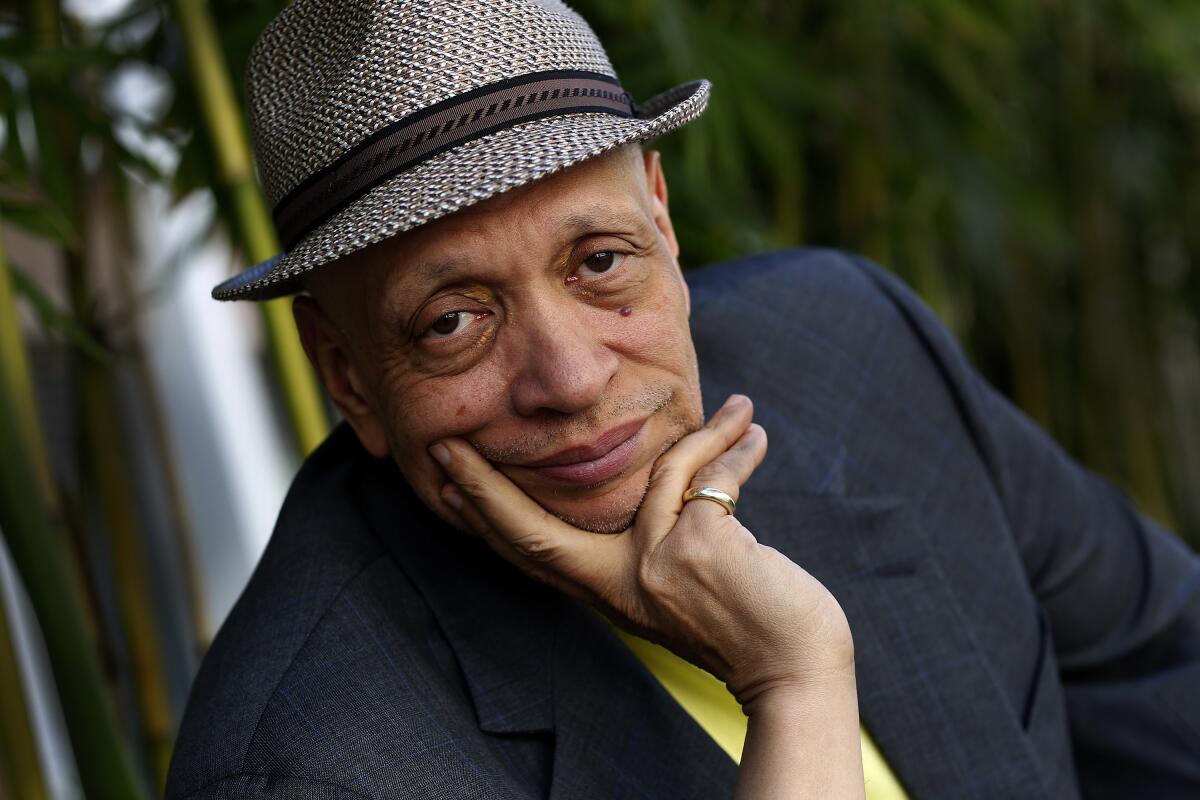
In Walter Mosley’s seminal novel about postwar Black L.A., “Devil in a Blue Dress,” his hero, Easy Rawlins, knows that “… in L.A. people don’t have time to stop; anywhere they have to go they go there in a car. The poorest man has a car in Los Angeles; he might not have a roof over his head but he has a car.”
Smog deserves to be badmouthed, but L.A. had smog before it had cars. The landscape itself created the original “Hollywood bowl” that cupped smoke in the broad L.A. Basin — brushfire smoke, campfire smoke, the miasma from tailpipes. In 1542, the Iberian explorer Cabrillo and his crew were the first Europeans to clap eyes on L.A., and Cabrillo had the place entered in the ship’s log as the Bay of Smokes.
Four hundred one years later, 1943, L.A. had its first acknowledged smog attack.
The science fiction writer Larry Niven is an Angeleno born and bred, great-grandson of the oil tycoon Edward Doheny, who would have been 5 in that first smog attack. “Once every hundred years, the Los Angeles smog rolls away for a single night, leaving the air as clean as interstellar space. That way the gods can see if Los Angeles is still there. If it is, they roll the smog back so they won’t have to look at it.”
An L.A. Times exposé — and in one instance, Gloria Allred quite literally exposing sex discrimination — led the Jonathan Club, the California Club, the Friars Club and others to become less exclusive, if not less expensive.
Los Angeles as an intellectual capital
Begin with the usual suspect: “I don’t want to live in a city where the only cultural advantage is that you can make a right turn on a red light.” Woody Allen tiptoed that back a bit in 2012, when he told the LA Weekly that he is not “anti-Los Angeles … I couldn’t live here because I don’t like a place where I have to drive everyplace, and I don’t like sunshine. But I love coming out here for a couple of days. I have a lot of friends here, and the town has, over the years, really come on very strong. When I first came out here years ago, you couldn’t get a decent meal in Los Angeles. Now it’s full of great restaurants, great museums; the opera’s wonderful.” Three years later, here for gigs with his jazz band, Allen answered a Times reporter’s leading question that maybe L.A.’s not such a bad place after all? For an answer, he got the Allen eye-roll, and, “Well, I wouldn’t go crazy …”
Now we’ll hear from Ethel Barrymore, the empress of the New York theatah. “Los Angeles society is anyone who went to high school.” I never read that Miss Barrymore scorned to accept the Oscar from one of her four movie acting nominations, nor the paydays that came with it.
The playwright Neil Simon, another New Yorker, but one who did not win the Oscar for any of his four screenwriting nominations: “When it’s 100 degrees in New York, it’s 72 in Los Angeles. When it’s 30 degrees in New York, in Los Angeles it’s still 72. However, there are 6 million interesting people in New York, and only 72 in Los Angeles.” For brevity’s sake, in his screenplay “California Suite,” he reduced it to: “It’s like paradise with a lobotomy.”
Among the multitudes of artists and intellectuals who were refugees from Hitler’s scorched-earth Europe to this “Weimar on the Pacific,” the acclaimed German playwright Bertolt Brecht felt profoundly the tragic contrast of Hitler’s distant, systematic slaughters and the sunny humdrum of Santa Monica. He tore at the wound in a poem, “Contemplating Hell.”
“Contemplating Hell, as I once heard it/My brother Shelley found it to be a place/Much like the city of London. I/Who do not live in London, but in Los Angeles/Find, contemplating Hell, that it/Must be even more like Los Angeles.”
Back to Miss Dorothy Parker. Her autopsy of Hollywood is below, but in 1962, she succeeded Christopher Isherwood as guest lecturer on the American novel at Los Angeles Valley College, in Valley Glen. She admired the diversity and pluck of her students, but it was not the idyll she had anticipated. “I think I expected an academic paradise under the elms. What I found were 18,000 students and 150 parking spaces.”
The word “plastic” — the trigger word in the film “The Graduate” — was too temptingly easy even for writers of large reputation. For the novelist Norman Mailer, “Chicago is the great American city, New York is one of the capitals of the world, and Los Angeles is a constellation of plastic. San Francisco is a lady.” In 2006, he conquered his distaste long enough to accept the city Library Foundation’s literary award.
William Faulkner, the novelist of the Gothic South, came here to write screenplays, and found that “Everything in Los Angeles is too large, too loud and usually banal in concept. … The plastic a—hole of the world.” And on another occasion, “They don’t worship money, they worship death.” That’s quite nervy, coming from a man whose novels positively roll in incest, lynching and decay. One of his stories is about a Southern gentlewoman who keeps her dead fiance’s corpse in her bed. So, there’s that.
Me, I’ll take the authentic fakery of Andy Warhol. “I love Los Angeles. I love Hollywood. They’re beautiful. Everything’s plastic, but I love plastic. I want to be plastic.” Mission accomplished.
Who is Griffith Park named for? What about Vasquez Rocks? The Broad? Mt. Baldy? Here are the namesakes of L.A.’s best-known landmarks.
Los Angeles as the outpost of apocalypse
The novelist Henry Miller, like his contemporaries and fellow novelists Aldous Huxley and F. Scott Fitzgerald, was born elsewhere but came to L.A. to live and work, and here they died. To Miller, “Los Angeles gives one the feeling of the future more strongly than any city I know of. A bad future, too, like something out of Fritz Lang’s feeble imagination.”
It is the Santa Ana wind — more than earthquakes, for some reason — that bears omens of catastrophe, that “shows us how close to the edge we are,” from Madame Didion again.
As for the nonstop journey to endtimes, here is the actor/producer/rapper/etc. Ice-T: “Los Angeles is a microcosm of the United States. If L.A. falls, the country falls.”
You have been warned.
Next time you raise a glass of California wine, remember the time when Los Angeles, not Northern California, was the state’s major wine region.
Los Angeles as the illusory and disappointing
Me, I’ve always thought that L.A. noir literature can pack more punch than even the crime stories of perpetually dour London, because here, the sunshine makes the shadows all the darker. James Ellroy’s writing inhabits that permanent shadow, in a Los Angeles “temperate, sunny, ideal for outdoor living. A wide range of options, until they narrow to live or die.”
Woody Guthrie spent time here in the 1930s, lived on the down-and-out side of the ledger, and wrote it in “Do Re Mi”: “We got to Los Angeles broke/Do-re-mi/California’s a garden of Eden/a Paradise to live in or see/But believe it or not/You won’t find it so hot/If you ain’t got the do-re-mi.”
It may come as no surprise that Jack Kerouac, the restless prosemaster who wrote “On the Road,” did not like L.A., a city as improvised as he. “I never felt sadder in my life. L.A. is the loneliest and most brutal of American cities; New York gets godawful cold in the winter but there’s a feeling of wacky comradeship somewhere in some streets. L.A. is a jungle.” (OTOH, it may come as a surprise that when it came to San Francisco, he could trill like a Hallmark Valentine: “ … fabulous white city of San Francisco on her eleven mystic hills with the blue Pacific …”)
The Cubs held spring training on Catalina Island. A team called the Tigers played in Vernon, then Venice, then Vernon again. And L.A.’s Wrigley Field held night games decades before Chicago’s did.
Los Angeles as no more than the plus-one of Hollywood
Toward the end of 1926, Herman Mankiewicz, the screenwriter who would co-father “Citizen Kane,” telegrammed his friend Ben Hecht, the newspaperman who was finding himself between gigs and behind on his rent. “Will you accept three hundred per week to work for Paramount Pictures. All expenses paid. The three hundred is peanuts. Millions are to be grabbed out here and your only competition is idiots. Don’t let this get around.” Decades of writers, actors and others put their artistic snobbery in storage and came west to get rich off the movies. Some of them failed miserably. Now who’s the idiots?
F. Scott Fitzgerald, the beautiful and damned author of “The Great Gatsby,” dropped dead in his girlfriend’s WeHo apartment on the winter solstice in 1940. He was 44 years old, and had labored off and on in Hollywood for years. Kevin Starr, the California historian and my late, wise friend, would conclude years later that “Los Angeles is the Great Gatsby of American cities.” For Fitzgerald, L.A. was Hollywood. “You can take Hollywood for granted like I did, or you can dismiss it with the contempt we reserve for what we don’t understand. It can be understood too, but only dimly and in flashes.”
Dorothy Parker could not stomach L.A. or Hollywood for long. In 1953, back in New York, she delivered this about Hollywood. “I don’t know what more to say about Hollywood. I just say it is a Stagnation. It is a Horror … Brilliant flowers smell like old dollar bills. Those enormous vegetables taste as if they had been grown in old trunks. That way of having no seasons … it’s just terrible. … I can only give to you, this message — anybody who isn’t living in Hollywood is having a good life!”
Bob Hope, along with Daffy Duck and Marlene Dietrich, helped popularize the catchphrase ‘Now you’re cooking with gas.’ Many decades later, we’re paying out the nose for the privilege.
Los Angeles as … itself
Visitors from the Old World tend to dote on San Francisco, which is a bijou-beautiful California version of a European city.
John Lennon was unsparing.
“We’re crazy about this city. Los Angeles? That’s just a big parking lot where you buy a hamburger for the trip to San Francisco.” For context, Lennon spent about 18 difficult months living here in the 1970s, separated from Yoko Ono, drinking and drugging and living with another woman, and once getting thrown out of the Troubadour for heckling and fighting, fruitlessly playing the L.A. trump card, “Do you know who I am?”
Among the earliest slights to L.A. was Frank Lloyd Wright’s, “Tip the world over on its side, and everything loose will land in Los Angeles.” As far as I’m concerned, that was a compliment. Tip the world, and the fearful and the timid, nailed securely and drearily in place, would stay put — but the footloose and bold and adventuresome would roll into L.A. and remake themselves.
Same for Billy Connolly’s remark. The Scottish comedian, actor and musician lived here off and on for several years, enough to be able to say, “I love Los Angeles. It reinvents itself every two days.”
He was right; you’ll see. Come back next week and this will be a completely different column.
Explaining L.A. With Patt Morrison
Los Angeles is a complex place. In this weekly feature, Patt Morrison is explaining how it works, its history and its culture.
More to Read
Sign up for Essential California
The most important California stories and recommendations in your inbox every morning.
You may occasionally receive promotional content from the Los Angeles Times.
